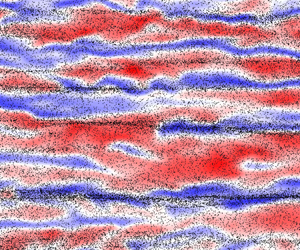No CrossRef data available.
Article contents
On the shear-induced lift in two-way coupled turbulent channel flow laden with heavy particles
Published online by Cambridge University Press: 01 April 2024
Abstract

The importance of shear-induced lift, i.e. Saffman lift, is investigated in two-way coupling point-particle direct numerical simulation of turbulent channel flow laden with heavy particles. A new criterion is established for the critical particle diameter normalized by wall viscous length, and the effect of Saffman lift on particle motion can be neglected when the particle diameter is smaller than the critical value. The new criterion agrees well with the numerical results. We further study the influence of Saffman lift on particle motion and turbulence modulation. The results suggest that the Saffman lift will increase near-wall particle velocity and reduce particle accumulation therein. By integrating the particle motion equation, it is demonstrated that the mean particle streamwise velocity is dependent on the particle wall-normal velocity. This theoretically explains why the presence of a wall-normal force alters the streamwise velocity of particles. A theoretical profile of mean particle streamwise velocity at different Stokes numbers is then obtained by introducing the diffusive gradient hypothesis and Prandtl mixing length model. In addition, the present results reveal that the Saffman lift tends to augment the level of turbulence attenuation. The spectral analysis shows that the Saffman lift reduces the turbulent energy of small scales in the buffer region and large structures in the logarithmic region. When the Saffman lift is absent, near-wall particle streaks can be observed in the buffer region, which tend to separate fluid streaks. By contrast, the Saffman lift tends to prevent the formation of near-wall particle streaks.
JFM classification
- Type
- JFM Papers
- Information
- Copyright
- © The Author(s), 2024. Published by Cambridge University Press





